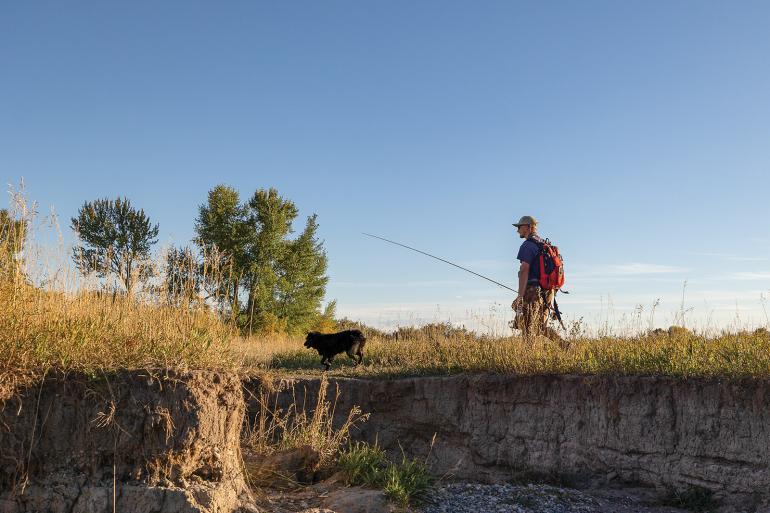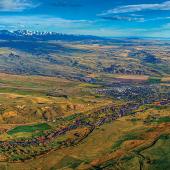Access for All
Montana's one-of-a-kind access laws.
There’s no place like Montana. It’s bigger than Wyoming, with far fewer people than Colorado. We have mountains and prodigious trout streams (sorry, North Dakota). And unlike many other states—we’re looking at you, Colorado and Utah—anglers in the Treasure State enjoy some of the simplest and most complete access to waterways in the nation.
Angler access to Montana rivers and streams was first enshrined in the 1972 state constitution, but further upheld by the state Supreme Court in 1984 with the ruling: “any surface waters that are capable of recreational use may be so used by the public without regard to streambed ownership or navigability for nonrecreational purposes.” In 1985, the state legislature codified the public’s use of waterways in what’s known as the Montana Stream Access Law.
The surface between the high-water mark and the current streamflow may be used by the public, but only for purposes related to water-related recreation such as swimming, floating, fishing, and waterfowl hunting.
It’s worth noting the court disregarded “navigability.” Under federal law, the public possesses the streambed of navigable streams, but states may define the term differently (Colorado contentiously skirts this by claiming no rivers in the state are “navigable”). Idaho, on the other hand, codifies navigability as a stream which, at high water, will float a piece of timber with a six-inch diameter, opening virtually all fish-holding streams in the state to the public. Montana anglers and water recreationists, however, are guaranteed public access regardless of navigability, not because of it.
Streamflows, of course, vary dramatically by the year and the season. Water recreationists in Montana have full use of the streambed within the high-water line, not just the water itself. A temporary flood that spreads onto a stream-side hayfield doesn’t give an angler the right to barge onto agricultural property. The high-water mark refers to “the line that water impresses on land by covering it for sufficient time to cause different characteristics below the line, such as deprivation of the soil of substantially all its terrestrial vegetation and destruction of its value for agricultural vegetation.”
The surface between the high-water mark and the current streamflow may be used by the public, but only for purposes related to water-related recreation such as swimming, floating, fishing, and waterfowl hunting. Hiking, unless incidental to water activities such as angling, is restricted to the stream itself. Big-game hunting is not legal via the Stream Access Law.
Take pride in Montana’s unique stream access and secure its future through your water etiquette and advocacy.
Nowhere in the law or court opinions is there a whiff of support for the public’s right to cross private land to reach waterways. Legal access must occur through public lands or easements, including Fishing Access Sites and boat launches. In 2009, a law was passed clarifying the right of access through public right-of-ways at bridge crossings. Manmade barriers, such as diversion dams and fences, may be portaged around on private land, but only through the least intrusive route possible.
For water-lovers accustomed to such generous access to the state’s stream resources, it’s important to remember a couple of things. First, some landowners would love to see public access to rivers restricted. Among them are individuals with the financial and political resources to effectively lobby for changes to the law. The current situation exists because of the vigilance and tenacity of public-access advocates and ordinary citizens making their voices heard at ballot boxes and in the legislative halls of Helena.
Secondly, recreationists undermine their own cause with poor river etiquette. Littering is certainly illegal and obnoxious. But blaring music from a raft, dogs roaming unfettered on adjacent private lands, and unlawful intrusions to nab firewood also lend incentive for landowners to restrict access. Please take pride in Montana’s unique stream access and secure its future through your water etiquette and advocacy.











